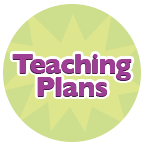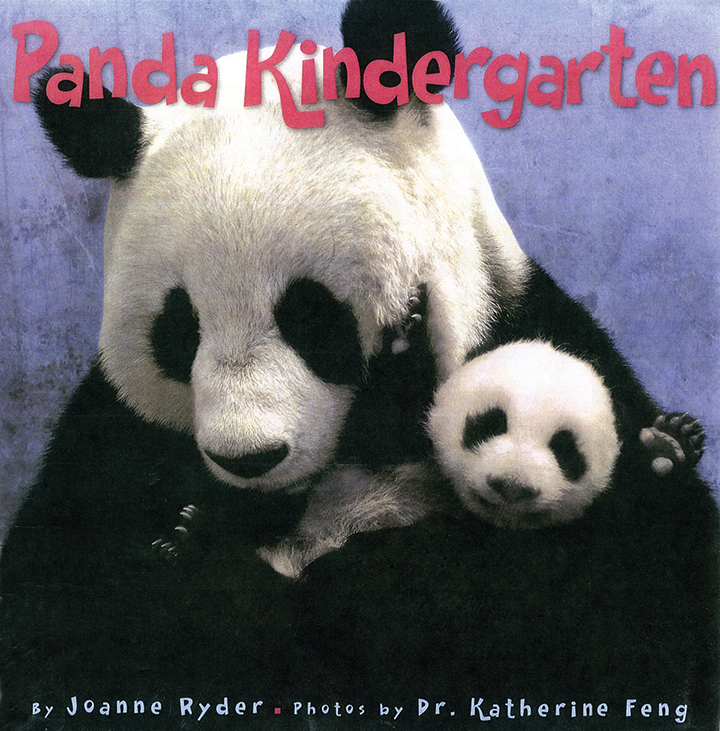Photos by Dr. Katherine Feng
Text Type: Non-fiction: Description — Account
Summary: The book takes the readers on a photographic journey through the life of young panda cubs born at the Wolong Nature Reserve in China. It illustrates the daily care these animals need to enable them to survive and to avoid becoming extinct.
Text Features
• ‘Fast Facts’ information about giant pandas on the last page
Visual Literacy
• glossy photographs
Strategy Teaching
• integrated throughout each lesson
• prompts focus on a range of strategies (Analyzing, Sequencing, Making Connections, Predicting, Inferring, Synthesizing, Evaluating, Self-Monitoring)
• the comprehension purpose for listening highlights Inferring/synthesizing
Assessment Opportunities
Note each student’s ability to:
• attend to story reading
• participate in partner and whole-class discussions
• understand the inquiry question
• make connections between the panda’s experiences and their experiences in kindergarten
Time: approximately 30–35 minutes
BEFORE READING
Establishing the Inquiry Focus- Explain that you will read the students a book about how people take care of a special type of animal—a giant panda.
When we care for animals in our world we need to give extra protection to some of them as there aren’t many of them left. There aren’t many giant pandas in the world, and we’re going to learn how people take care of them so that baby panda cubs grow up safely.
Show students the front cover of Panda Kindergarten and read the title and the names of the author and photographer.
Activating and Building Background Knowledge
Have you seen giant pandas? What did you learn when you saw them? Maybe you’ve seen a picture or have a stuffed animal toy that looks like a giant panda. What does it look like?
Ask students what they think they know about giant pandas. Show students a few of the photographs in the book to help those who haven’t seen giant pandas to talk about what pandas look like. [Making connections]
- Show students, on a map or globe, where they live in Canada and where the pandas live in China. [Analyzing/making connections]
What kinds of things do you learn in kindergarten? What do you think pandas might learn in their kindergarten? Why do you think that?
Ask students about the title of the text to help them connect their experiences with the pandas’ possible experiences in kindergarten. [Making connections]
How do you think they’ll care for them? Why do you think that?
Ask students to predict who they think takes care of the pandas and how they do it. [Predicting]
Setting a Purpose for Listening
You’ll be able to learn how people take care of pandas by listening and also by looking carefully at the photographs as I read.
Ask students to listen for ways people take care of the young pandas as you read the book. [Inferring/synthesizing]
DURING READING
- This book has such beautiful and informative photographs that you will want to pause frequently (perhaps even on each page) to discuss the text and photos with the students. Alternate between asking students to discuss as a whole group and with partners.
- Prompts for discussion include:
- What do pandas look like? Do they look different as they grow? In what ways? [Analyzing/synthesizing]
- How do you change as you grow? [Making connections]
- How do the mother pandas take care of their cubs? [Analyzing/synthesizing]
- Do they care for their cubs like your mother or father care for you? In what ways? [Making connections]
- The text says they are ‘given great care.’ What can you see in the photos that shows the good care they are given? (e.g., providing blankets for nap, feeding, weighing, taking care of the twins, giving affection, making a playground, and offering toys) [Inferring/synthesizing]
- How do the trained people help the mother to take care of twins? [Analyzing/synthesizing]
- What stages in a panda’s life do we see? [Sequencing]
- What happens to the pandas when they grow up? [Analyzing/synthesizing]
So why do you think we need to take care of pandas?
Read the ‘Fast Facts About Giant Pandas’ on the last page. Clarify where necessary and discuss.
AFTER READING
Tell your partner one way they cared for the pandas and then your partner can tel you another way.
Invite the students to work with a partner to review how the people cared for the pandas. [Analyzing/synthesizing]
-
Do you think they did a good job in caring for the pandas? Why do you think that?
Ask students to talk about whether they think the pandas were well cared for. Ask them to support their ideas with reasons. [Evaluating/synthesizing]
FURTHER READINGS
-
You may decide to explore some other visual resources (for example, those suggested in the following section, Extending the Inquiry, or others you find) before you reread Panda Kindergarten. When students are provided with background such as video clips, live recordings of the sounds made by a newborn panda, and even a webcam to look at ‘right now’ pictures of pandas, the information enriches both the inquiry and the students’ connections with Panda Kindergarten.
-
How are your days different/the same? Do you play the same way? Do you play with the same toys? Are you taken care of in the same way? Why do you think that?
When you reread Panda Kindergarten, emphasize visual and textual comprehension and revisit the ‘Fast Facts’ page. Ask students to compare their experiences in kindergarten with the pandas’ kindergarten experiences. [Making connections: comparing] -
Show me how you would hold something ‘tenderly.’
Discuss comprehension of vocabulary concepts, e.g., ‘holding it firmly but tenderly,’ ‘twin’s,’ ‘curious cubs,’ ‘bolder and stronger,’ ‘rare panda.’ Some of the vocabulary in the ‘Fast Facts’ section may need explaining, e.g., ‘low birthrate,’ ‘endangered,’ ‘mascot.’ Where possible, have students act out the verbs so that they have a better understanding of the vocabulary.
EXTENDING THE INQUIRY
Young students explore and research in multiple ways. Consider using some of the following suggestions to extend the inquiry.
-
Show students video clips and pictures of young pandas and their care. Websites that may be helpful include:
China Conservation and Research Centre for the Giant Pandas Website
National Geographic for Kids Website
-
Does that make you wonder about…? I’m asking myself the question…, What question are you asking yourself?
Encourage students to talk about the video clips and pictures and to ask questions that may be answered by other sources.
[Self-monitoring]
-
You may also decide to show video clips and photos of other endangered animals, e.g., tigers, polar bears, elephants, whales, and marine turtles.
- Read other books about pandas to your students and place such resources in the reading centre so that students can look through them individually or with a partner. Encourage students to talk about their learning and to ask questions. Suggestions include:
- Little Panda by Joanne Ryder: Aladdin Paperbacks, 2001
(Non-fiction: the birth of a new panda at the San Diego Zoo)- PiShu by John Butler: Peachtree Publishing, 2001
(Fiction: a baby panda grows with his mother in the wild. Information about pandas is woven
into the tale.)- How Many Baby Pandas? by Sandra Markle: Walker and Company, 2009
(Non-fiction: features baby pandas at the Wolong Centre in China)
- You may wish to extend the inquiry by reading books about other endangered animals to the students and placing those books in the reading centre.
- Link to other Read Aloud texts in the original Literacy Place for the Early Years that feature endangered animals. The Rescue of Nanoose focuses on the rescue of a humpback whale, and Babies on the Go shows pictures of several endangered species, e.g., polar bears, sea otters, elephants, and chimpanzees. You may wish to reread these books to the students and extend the inquiry to other animals that require protection or you might put them on your list to read next if you haven’t already introduced these books to your students.
-
How did you learn that a panda moves/sounds/eats like that?
Invite students to ‘move like pandas’ in a large open space (e.g., in the gym or outside). Suggest that they walk like a baby panda or a larger striding adult, that they climb like a panda, or play and nap like a panda. They can even make panda sounds if they have heard these on video clips. Pause to talk over the movements. -
Ask students to dramatize caring for pandas. They can work with partners or in small groups and dramatize one aspect of panda care that they have learned about. Students can colour panda masks (see the Panda Mask BLM) and thread them with elastic or wool, or tape them to rulers. The students who are taking the roles of pandas can use the masks. It is a good idea to allow time to change roles so that each student has the opportunity to be a panda and a caregiver.
-
Invite students to create pandas at the art centre. Suggest that they try their own ideas or one of the following:
- Draw and paint a panda scene.
- Make a panda from modelling clay.

